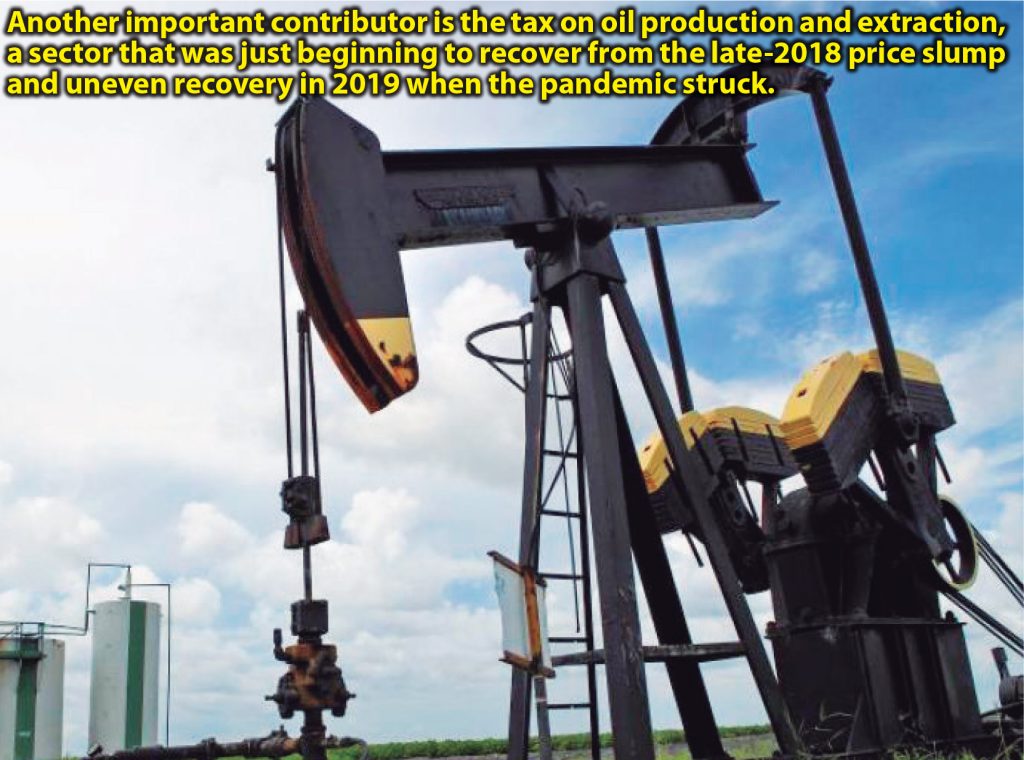COVID-19’s Fiscal Ills: Busted Texas Budgets, Critical Local Choices

By Jason Saving Federal Reserve Bank Of Dallas
Texas tax revenue on a year-over-year basis plunged by an alarming 49% in April, the first month to fully reflect the economic impact of COVID-19.
While tax collections have since partially recovered, the state comptroller forecasts a US$4.6 billion shortfall for the 2020–21 budget cycle. Many localities, also dependent on the sales tax, project significant belt-tightening.
The budgetary woes pose potentially dire implications for individuals seeking government services and for firms whose survival depends not only on consumers’ current health, but also on who bears the tax burden.
Texas’ Tax Structure
The Texas budget had anticipated expenditures of about US$125 billion, with about half of the money expected to come from state taxes and the rest from other sources such as license fees, lottery proceeds and federal transfers.
The state raises its revenue primarily by taxing consumption. Roughly three-fifths of tax dollars come from a single source: the general sales tax of 6.25% that is assessed on most retail transactions.
Another quarter comes from selective sales taxes on goods such as motor fuel and automobile purchases, and most of the remainder (one-eighth) from business taxes such as the franchise tax.
The sales tax is less important to local governments. Cities, counties, and other taxing authorities raise more than 80% of their revenue from the property tax and most of the rest (12.3%) from the general sales tax.
The remainder (5.2%) comes from a variety of sources, including hotel taxes and utility taxes, which are important for certain jurisdictions though they constitute only a small part of total revenue.
While there are differences in how state and local governments raise revenue in Texas, one area in common is the lack of an income tax.
Such a tax provides about a quarter of state and local revenue in other states but is subject to greater revenue volatility in tough economic times, potentially leading to larger fiscal adjustments than would be expected in Texas. Yet, no tax system can fully guard against recession.

Texas Tax Receipt Slump
Texas started its current fiscal year on an upbeat note. Halfway through fiscal 2020—at the end of February—tax revenue was 5.6% ahead over the same period in the year prior.
However, revenue declined 10.6% in the second half of the fiscal year compared with the same period in 2019 as COVID-19’s economic impact emerged.
Sales tax collections alone fell 4.7% (US$816 million) during the period. Consumption often falls during recessions as people find themselves with less disposable income, putting at risk the threefifths of state tax revenue that the sales tax provides.
If anything, social-distancing policies aimed at limiting COVID-19 spread may have exacerbated sales tax losses because the additional obstacles to conducting in-person transactions have been only partially offset by online or internet alternatives.
While diminished sales tax receipts are certainly part of the story, total state tax revenue slipped just over US$3 billion in the second half of the fiscal year. That disappearing US$800 million, while significant, represents only one-quarter of the state’s total tax revenue loss. That means other, smaller taxes have declined far more than the sales tax.
Levies on gasoline (down 13.3%), alcohol (off 41%) and hotels (down 52.6%) have been a key contributor to the shortfall.
These taxes all correspond to the leisure and hospitality activities that have been dramatically curtailed because of social-distancing behavior, lockdown regulations and consumer health concerns.
Generating revenue from these taxes depends on how quickly individuals resume normal activities and policymakers permit businesses—which are themselves dependent on the level of COVID-19 cases—to fully reopen.
Another important contributor is the tax on oil production and extraction, a sector that was just beginning to recover from the late-2018 price slump and uneven recovery in 2019 when the pandemic struck.
Oil-tax revenue fell slightly last fall and rose 33% in the winter before abruptly plummeting by half during the ensuing months.
This can be contrasted with the less-meaningful tax on natural gas, where COVID-19 exacerbated difficulties in an already soft market.
One of the few taxes moving in the other direction is the franchise tax—Texas’ main tax on business revenue—which actually rose 3.4% in the second half of fiscal 2020.
However, firms’ 2020 franchisetax payments reflect revenue earned in 2019, in much the same way individuals pay income taxes on what they earned the previous year. As a result, the 3.4% increase is not reflective of current economic conditions, though it helps mitigate the revenue declines.